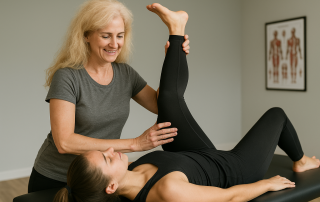Fibromyalgia causes widespread pain, stiffness, fatigue, and sleep problems. These symptoms often stem from an overly sensitive nervous system. While there’s no single cure, a thoughtful plan can dramatically improve daily life. One proven pillar is manual therapy, especially when delivered gently and consistently. At Manual Therapy Associates (manualtherapyassociates.com), we provide personalized care. Our hands-on approach helps reduce pain, soothe your nervous system, and boosts your confidence in movement. Understanding Fibromyalgia Symptoms is key to effective management.
How Manual Therapy Helps with Pain and Quality of Life
Understanding Fibromyalgia Symptoms
Manual therapy isn’t about force; it’s about precision and pacing. Gentle, steady touch can relax tight muscles, boost blood flow, and send “safety” signals to the brain. This helps reduce pain. When movement gets easier, many people notice better sleep, a better mood, and more tolerance for daily activities. These activities can be anything from desk work to walking the dog. Manual therapy works well with medication, gentle exercise, and stress management. Together, they help control symptoms over the long term.
This approach not only addresses physical discomfort but also enhances awareness of Fibromyalgia Symptoms, empowering individuals to manage their condition more effectively.
Gentle Techniques for Sensitive Patients
Many people with fibromyalgia are sensitive to touch. So, we use gentle, low-load methods that respect tissue tolerance.
- Gentle Myofascial Release (MFR): It involves slow, steady holds. This technique helps ease fascial tightness and prevents flare-ups.
- Grade I–II Joint Mobilizations: Small-amplitude glides that soothe rather than push range.
- Craniosacral-Informed Touch: Feather-light contact aimed at nervous-system down-regulation.
- Lymphatic Drainage Principles: Gentle, rhythmic strokes help ease heaviness or puffiness. They also support recovery.
- Positional Release & Strain–Counterstrain: Comfortable, shortened positions to quiet tender points.
- Trigger Point De-sensitization: Brief, easy pressure (kept under 3/10 on the pain scale) followed by relaxed breathing.

Each technique is patient-led: you set the pace, we stop early if sensitivity rises, and we always aim for relief—not soreness.
What a Fibromyalgia-Friendly Session Looks Like
A typical visit at Manual Therapy Associates begins with a quick check-in. We ask about your sleep, stress, and recent activities. This helps us “dose” touch just right. Sessions emphasize:
- Low and slow: Short treatment bouts (5–7 minutes per area), frequent reassessment.
- Pain-scale targets: We keep sensations around 2–3/10, avoiding next-day spikes.
- Breath-led pacing: Diaphragmatic breathing and longer exhales to support relaxation.
- Heat and comfort: Warm packs and supportive positioning to prevent guarding.
- Aftercare: A simple home plan:
- 30–60 seconds of gentle stretches
- Self-massage with a soft ball
- Brief movement breaks
A Quick Success Snapshot
“J,” 46, arrived with daily neck and shoulder pain (6/10) and morning stiffness. In six weeks, we used gentle MFR, grade I–II cervical mobilizations, and lymphatic strokes. We also included two home drills: breathing and micro-stretches. J’s average pain dropped to 3/10, morning stiffness shortened by half, and she returned to 30-minute walks without a flare.
The Bottom Line
Manual therapy can help many with fibromyalgia. It provides a safe way to reduce pain and improve quality of life. This works best when it’s gentle and aligns with your goals. Ready to explore a calmer, more mobile you? Learn more or request an appointment at Manual Therapy Associates: manualtherapyassociates.com.
Check out our Facebook!




